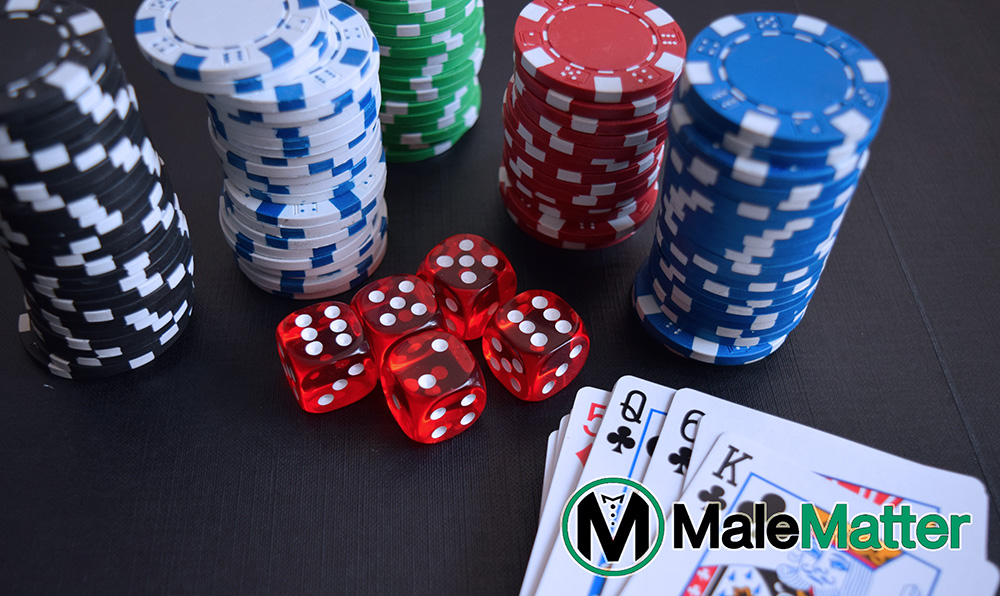 Greetings, gentlemen! Your buddy, Nelson, here to give you another dose of Male Matter information. Now, we have talked about the card game Blackjack before. But as everyone knows, that is not the only card game in the world. Today, we look at perhaps what is arguably the more popular card game: Poker. Poker is simple to learn, but hard to master. What follows are the basics to start!
Greetings, gentlemen! Your buddy, Nelson, here to give you another dose of Male Matter information. Now, we have talked about the card game Blackjack before. But as everyone knows, that is not the only card game in the world. Today, we look at perhaps what is arguably the more popular card game: Poker. Poker is simple to learn, but hard to master. What follows are the basics to start!
Poker: A Brief Guide and History
The game poker has been around for quite literally over a millennium. The earliest variants can be traced to 10th Century China. Given that nation’s long history, that is not surprising. What is surprising is that it may have started not as a card game, but as a game of dominoes. This would make it similar to the Mahjong game.
Another potential origin of poker is the Persian game “As Nas” in the 16th Century. But perhaps the most often credited grandfathers of the modern poker game are the German “pochen” and the French “poque.” Both of these originated around the 17th Century. The French poque game would later be brought to the United States by the French in the 18th Century, evolving into the poker game we know today.
The five-card hand and 52-card deck standard format of the poker game has been around since the mid-1800s. The basic rules have remained the same, but the variants have sprung up in different parts of the world. The most popular versions of a poker game are the draw poker, stud poker (i.e. five-card stud, seven-card stud), and the community card poker (particularly the Texas Hold’em poker variant).

Basics of a Poker Game
Poker has a cornucopia of rules and game specifics. However, there are some standard parameters that most games follow:
- Cards — Pretty much all poker games use the 52 traditional card deck (in some cases the jokers are included). You can play poker with only one deck, but the more formal games played in casinos or competitions use at least two packs per table (shifting between the two decks each game). In some cases, particularly in casinos and clubs, any player can call for new cards to be used (in which case new packs are opened each time).
- Card Values — Standard values on the card suits are used for poker. For instance, a King is better than a Queen, an Ace is better than a King, and so on. In general, the actual suits (i.e. clubs, diamonds, hearts, spades) have no value by themselves. This means a King of Hearts has the same value as a King of Spades.
- Hand — While the number of cards in a hand can vary, the standard is usually a hand of five cards. These hands are then compared to other players’ when it is time to call for a reveal.
- Score — Scoring for poker is another area where the protocols are consistent. A standard hand of five cards will be scored and compared.
- Chips — Although you can technically play poker without chips, you do need a way of tracking bets. Whether you use anything from dimes to gummi bears, the importance is there is a way for players to place, call, and raise their bets. Casinos and clubs, however, will almost always use chips for this purpose.
Scoring a Poker Game
The ways of scoring and hands for comparison are as follows (from lowest to highest):
- “Nothing” — Otherwise known as a “no pair.” Most of the time, this would be a losing hand unless all the players have a “no pair” result. At that point, the hand with the highest suit would win.
- One Pair — A single pair of the same value, while the other three cards are each of a different value.
- Two Pairs — Two pairs with different values (i.e. two Kings and two 9s). The fifth card is different from both.
- Three of a Kind — The hand has three cards of the same value, while the other two are different values.
- Straight — A hand of five cards, all in a sequence, but of different suits. For example, the hand has ranks five to nine. However, it is a mix of different suits hearts, spades, diamonds, or clubs.
- Flush — The hand is of different ranks, but all share the same suit. For instance, all five are diamonds.
- Full House — This hand composes three cards of the same rank and two cards of the same rank. For example, three Queens and two 4s would be a full house.
- Four of a Kind — A hand of four cards with the same rank with the fifth card having a different rank from the rest.
- Straight Flush — This is usually the highest possible hand in a standard poker game (with the absence of wild cards like a joker). This happens when you get consecutive ranks with all five cards and all are of the same suit.
- Royal Flush — Technically, this is a straight flush, but it holds a special mention. This is when a player holds a hand of all the highest ranked cards (Queen, King, Jack, Ace, and 10) and all share the same suit (i.e. all are spades, for instance).
Again, while there are different variations of poker, these are the most common scoring rules.
Poker Bets
While the hand-dealing phase of poker is highly luck-centric, it is in the betting phase where skill is most important. Multiple times during a poker game, there will be an opportunity for players to add to the initial “pot.”
The pot is initially determined at the start of the game. Players put in chips (called their ante). This would generally be the winnings of the player at the end of the game. In the course of the game, one or more opportunities to increase their bet will occur.
During these phases or rounds, each player can determine their bet, moving from the left. A player can match the previous bet (a “call”) or put a higher bet (a “raise”). A player can also choose not to bet and “fold,” at which point that player loses the game (regardless of their hand). There is also the option of making a “check.” No, it’s not literally writing a check. Rather, it is saying they are staying in the game with a bet of nothing. However, this can only be done if no one before them has called or raised.
One betting phase ends when all the players have either called, raised, folded, or checked a bet. Another betting phase or round commences and follows the same sequence until the showdown. The showdown is when all players reveal their hands. Whoever has the best hand wins.
Note that a showdown may not come into fruition if all except one player folds. Thus, a player can win even with a hand of “nothing” if he can successfully bluff against the other players. This is why being able to read a player’s actions and quirks can be important keys to poker success.
Showdown!
Poker is simple enough to learn, but it is a complicated game to master. The best players in the world have learned the different nuances to betting, bluffing, and understanding the “tells” of other players’ behaviors. Just as with Tom Venuto’s “Burn the Fat, Feed the Muscle” system, knowledge is power! So in the future, we will look further into the more advanced strategies of poker.
Keep your eye out for more information and tips for the Male Matter Man!

